How a Wild West Showman Brought Man-Lifting Kites to the British Army
In the early 20th century, military daredevils soared high.
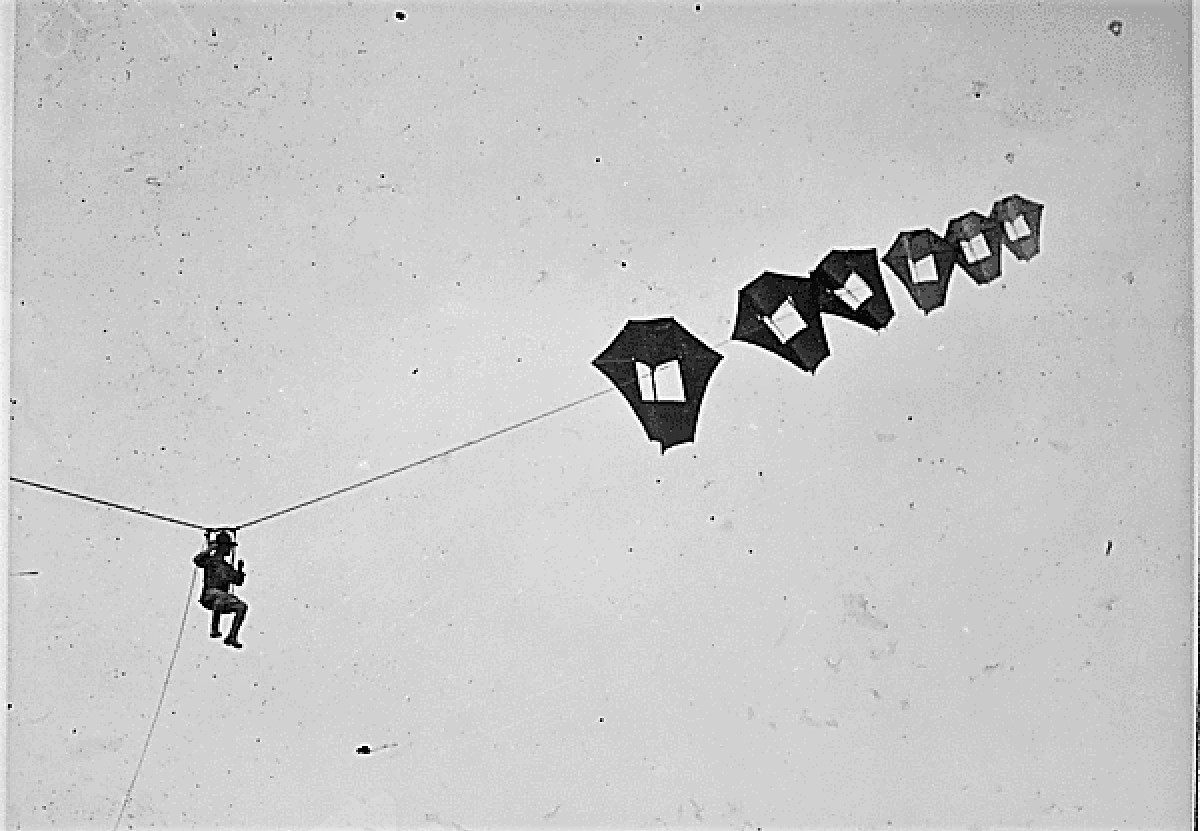
On a clear day, somewhere between 1914 and 1918 (the exact year has been lost to time) a crowd of American military men assembled in a field strewn with wildflowers. They were dressed in the official garb of the time: brimmed hats and pants that ballooned around the thighs and were tucked into high boots. They had come to fly a kite—but not just any kite. The apparatus they had was a chain of large kites, and strapped to the final kite was a man, sitting on a wildly precarious-looking seat like a children’s swing, chomping on a cigarette and holding an unwieldy box camera on his lap. His companions, gripping the rope tightly, let each kite into the air until, finally, they allowed the man to go aloft as well. He sailed hundreds of feet above their heads, a tiny dot in the air.
This might sound like a stunt performed for entertainment, a one-off for daredevils. But in fact, around 1900, so-called “man-lifting kites” were gaining in popularity throughout the U.S. and Europe and had especially piqued the interest of militaries, who thought they’d make dandy surveillance tools.
Far from just a novelty for kids, kites were already being put to lots of practical uses, including by scientists studying the atmosphere. Such was the mania for kites, British inventor George Pocock patented a kite-powered buggy dubbed the “Charvolant” in 1826. (One CalTech researcher even successfully backed up a hypothesis that Egyptians had used kites to build the pyramids by erecting an obelisk with one in 2001.)
“You could lift instruments to test the air, you could really have a lot of power in these,” says Scott Skinner, a kite designer, founder of the Drachen Foundation, a non-profit devoted to kite advocacy and history, and author of several books on kites. “You could lift cameras. The next logical thing became, why not use the kite as a lifting mechanism for a military observer?”
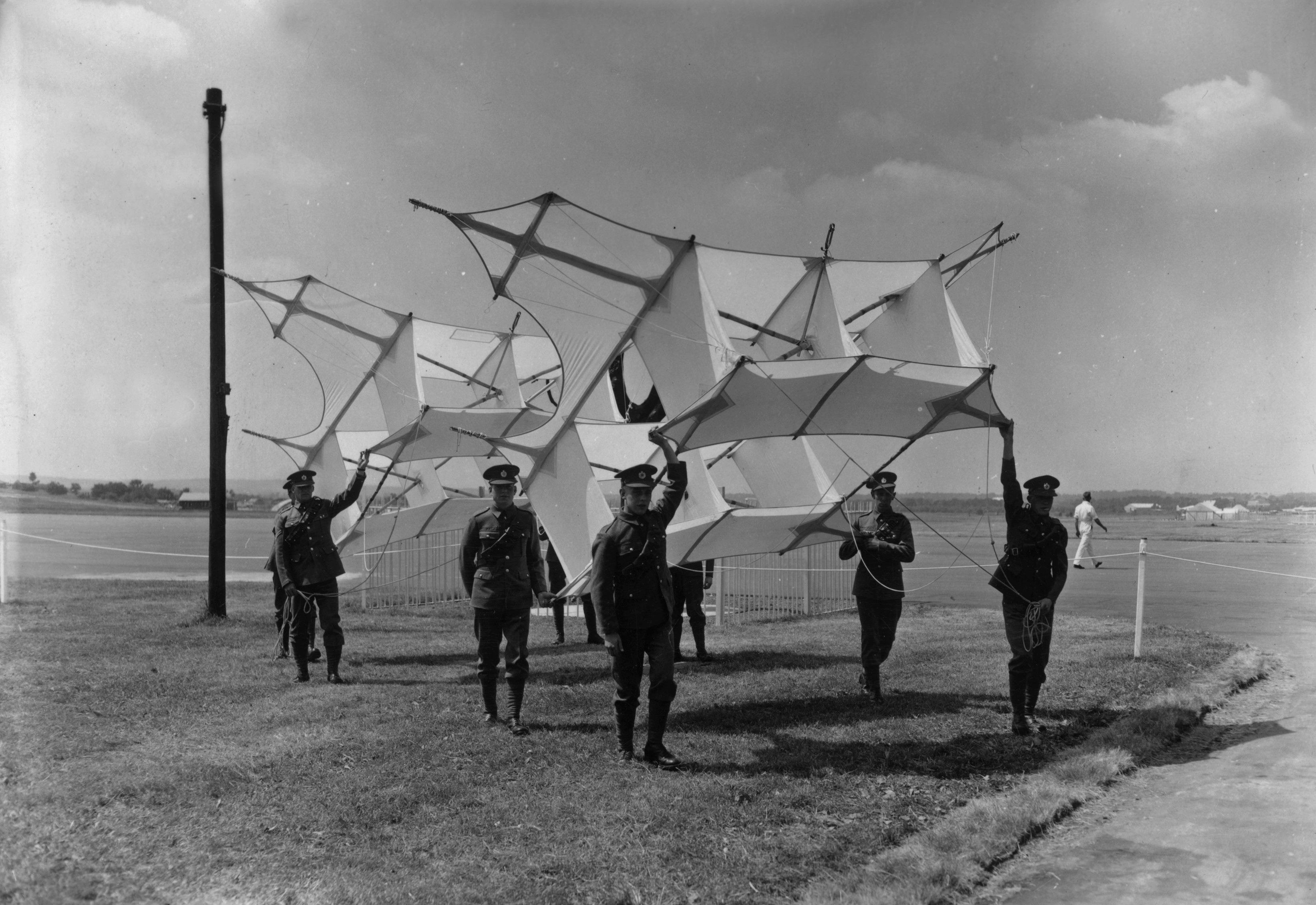
Although there were several versions, a basic design entailed a long string of large kites hitched together in a chain, with a final kite fitted with a seat for its passenger, often a basket. Men on the ground would typically let out rope via winch, and both the ground team and the passenger helped steer the kite. Once airborne, the passenger could use a radio phone or signaling device to relay information about the enemy’s position, and even take bird’s-eye photographs.
In 1894, early man-lifting-kite experimenter Captain Baden Baden-Powell (brother of Boy Scouts founder Robert Baden-Powell) sent a man aloft in one at a British army training center. Later that year, in November, Australian Lawrence Hargrave took off from a beach attached to a string of box kites.
But perhaps one of the most colorful and well-remembered proponents of man-lifting kites was Samuel Franklin Cody.
“He truly was a self-promoter and a carnival barker,” says Skinner. “Really on the border of being a shady character.”
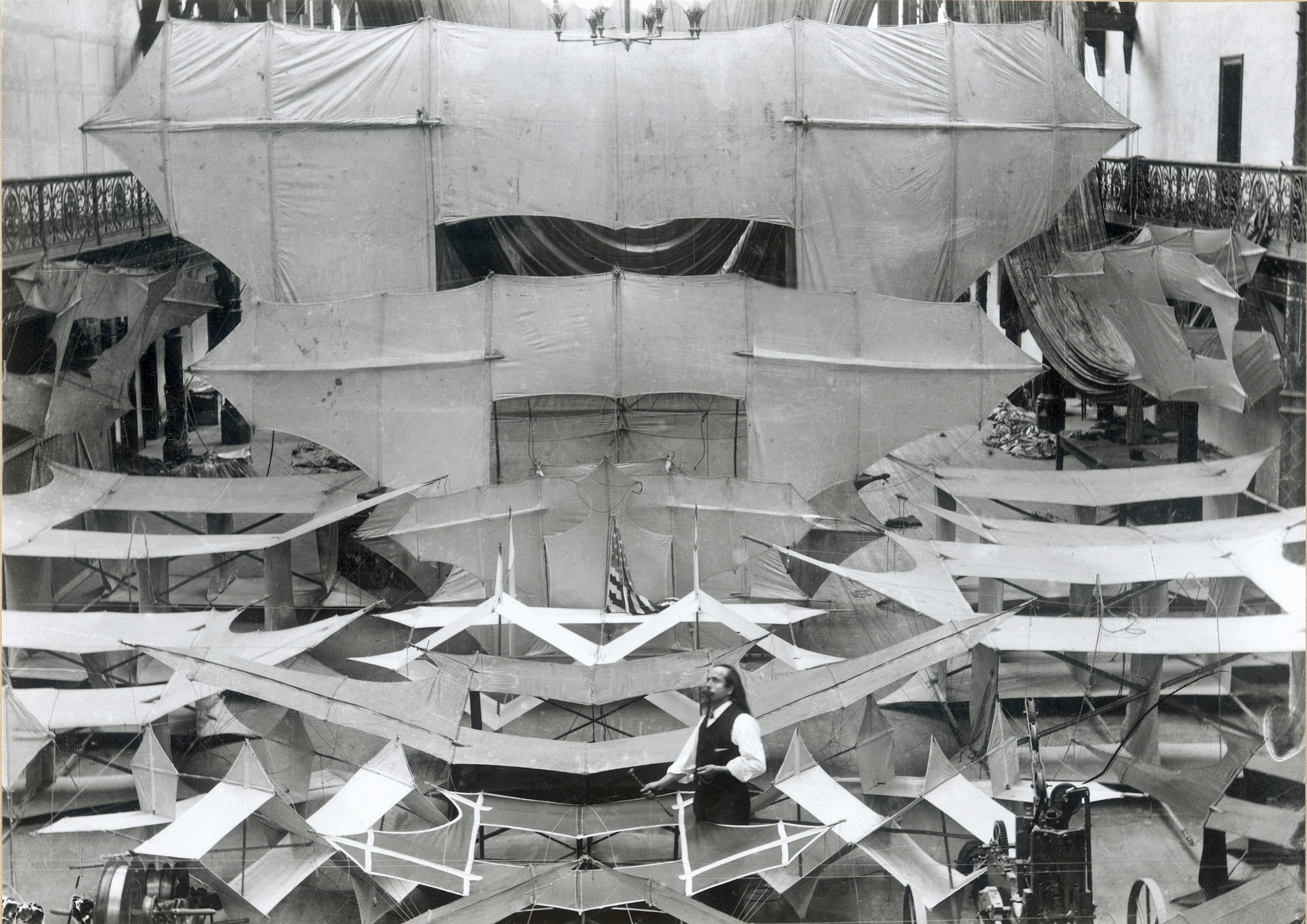
Cody was born Samuel Franklin Cowdery in Davenport, Iowa in 1867. As a young man, he acquired the skills necessary to join a traveling circus as a Wild West showman. He entertained U.S. crowds lassoing, shooting and riding horses. He adopted the name of much more famous showman, Buffalo Bill Cody, and dressed the part. He sported flowing long hair, an audacious mustache that pointed up at the ends, fringed jackets, big hats, and vests. Eventually, he split with the circus and crossed the Atlantic to Britain, where he began touring with his own show, a Wild West play called “The Klondyke Nugget” based on his (potentially false) claims that he had mined the Yukon. The play was a hit and included equine stunts so explosive that they prompted at least one person to lodge a complaint with the local newspaper. “The marvellous feat of the horse falling through a bridge at distance of 13 feet, is so accomplished—although intended to appear dangerous to the public—as to be perfectly harmless,” harrumphed the show’s general manager in an response to the same paper.
“While touring Great Britain he became enamored with kites,” says Skinner. Kite enthusiasm in Europe was flourishing; serious hobbyists and scientists alike read kiting magazines and gathered at annual fetes. Cody built and flew them, and finally decided to throw his effort into designing a man-lifting kite that could be turned into dollar signs and prestige.
By 1901, Cody had patented a version of a man-lifting kite, and according to biographer Garry Jenkins, was flexing his entrepreneurial muscles. “By then he has already written to the war office, offering them first option on ‘SF Cody’s Aroplaine [sic] or War-Kite: A boy’s toy turned into an instrument of war,’” he wrote in Colonel Cody and the Flying Cathedral.
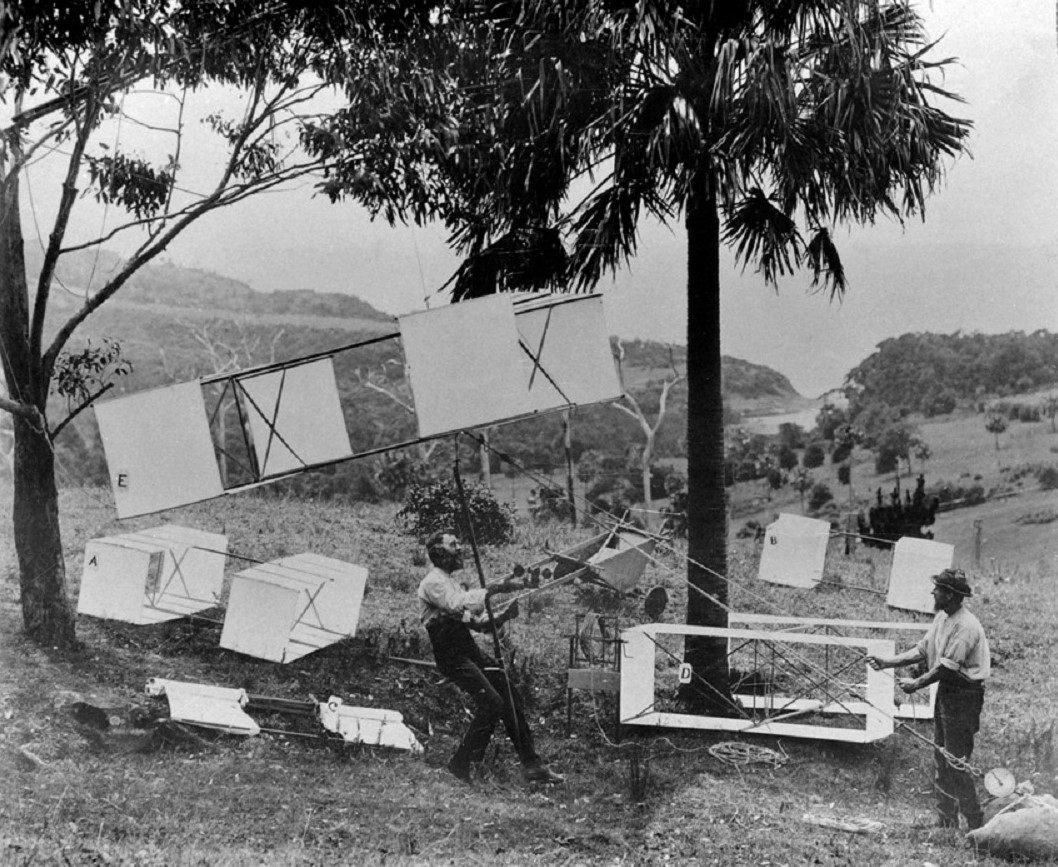
The military was interested in kites; they had a strong advantage over the balloons they used for surveillance, which had to be inflated, were cumbersome in strong wind, and easier for snipers to spot.
“They were really very, very sophisticated,” says Skinner. “And as we build replicas today we find these were really amazing kites built to fly in high winds—very sturdy, very strong and reliable. They had to be very quick to erect, break down and easy to carry from one point to the next.”
Nonetheless, the British Armed Forces didn’t bite on Cody’s early advances. Undaunted, he persisted in his experiments: He sent a man a startling 14,000 feet into the air (a height bested only by a previous flight conducted by the Blue Hills Observatory in Massachusetts that vaulted a man 15,000 feet in the air), he participated in scientific kiting contests, and in 1903 he sailed a kite-powered boat across the Strait of Dover. Finally, the military extended a contract to Cody in 1905 and appointed him Chief Instructor in Kiting.
It is difficult, according to Skinner, to pin down how frequently such kites were used on the battlefield. Cody’s kites, although used by the army and navy in Britain until the beginning of the first World War, were not deployed operationally. Such kites seemed to be most popular with the French military, says Skinner. And of course, their obsolescence loomed as flying technology advanced. Cody collaborated with the army on developing flying machines, and on October 16, 1908, became the first person to pilot a powered airplane in Great Britain.
Such recognition probably meant a lot to Cody, who remarked bitterly to the London Standard in 1909 that, “I have been subjected to a great deal of ridicule and derision—laughed at, scoffed at, and been generally made a butt. Now it’s my turn.”

His contract with the military would end that year, but he continued to build and fly early airplanes. It was during one of these flights in 1913 that Cody met his demise. His craft broke up in the air, and both he and his passenger, a famous cricket player, were killed.
A friend recalled Cody for an obituary in the London Standard, writing bluntly even in Cody’s death about his complicated relationship with the military.
“The authorities countenanced him if they did not encourage him, but even they, I fancy, did not regard him very seriously,” wrote his acquaintance. “But Cody had genius, and to genius he added craftsmanship, a good deal of practical business ability, and an unconquerable determination to go through with what he took in hand.”
But the authorities clearly had some respect for the kite master—upon his death Cody received a full military funeral and burial in a military cemetery, even though his formal relationship with the armed forces had come to an end.
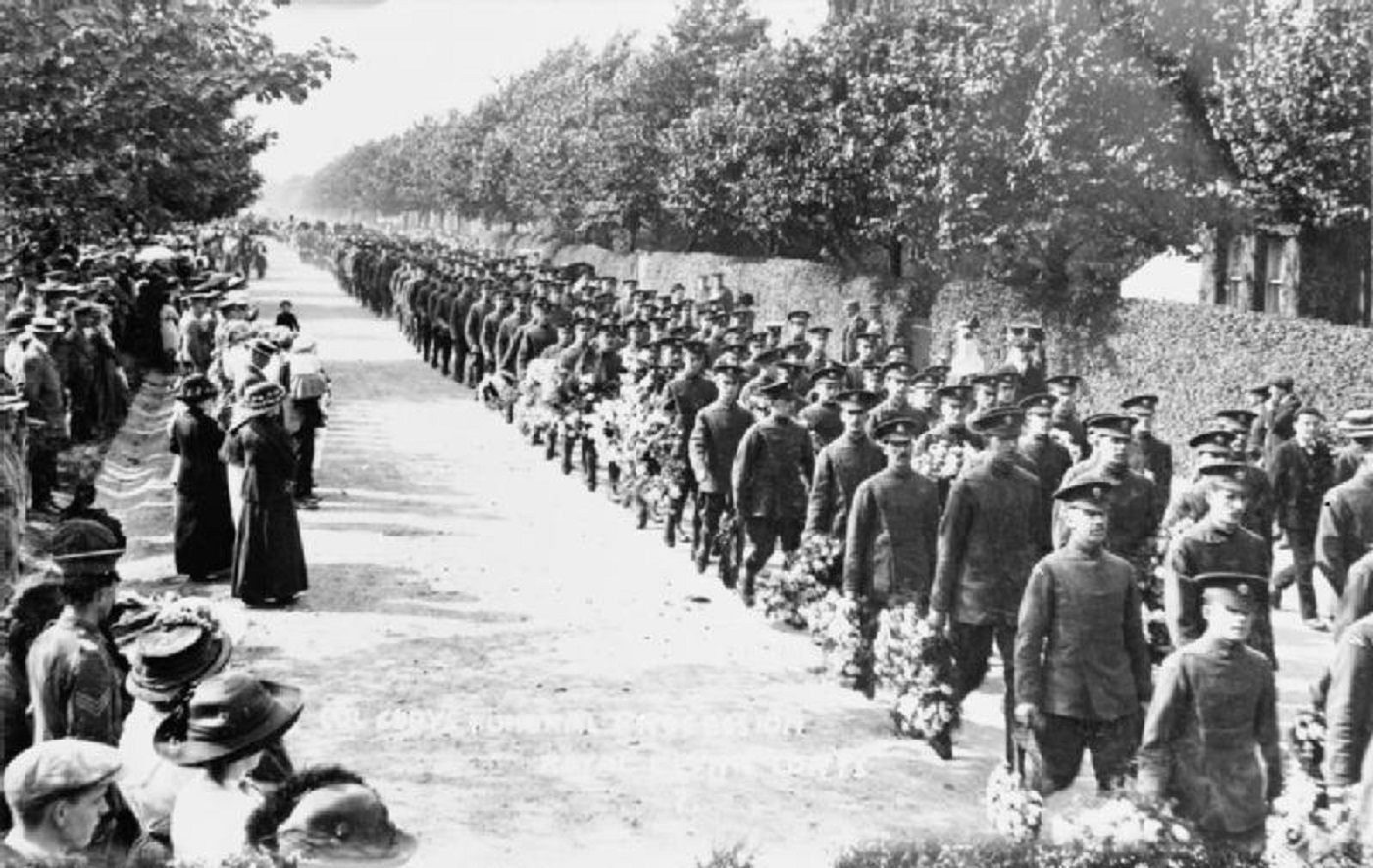
Today, says Skinner, it is important to marvel at the feats Cody and his ilk accomplished with the tools of the day.
“I think the thing we forget as modern kite fliers is that they were using materials that they were all very much used to—cotton, linen, bamboo,” he says. Today’s kite fliers have the advantage of working with rip stop nylon, carbon fiber and fiberglass.
Far from being a thing of the past, kite enthusiasm is thriving. Some builders have even undertaken the task of building modern man-lifting kites. Skinner described watching such a feat in Denmark in the early 1990s, when a group successfully lofted a man on high from a beach.
Skinner himself is headed to a dry lakebed near Las Vegas in April to “kite buggy”— the sport of being propelled swiftly across the land in a small cart powered by a kite.
“I would love to fly in a kite system, just because I’ve been doing this for 40 years,” he says. “But on the other hand, my sense come to me and says, mmmmmmm, maybe not!”




















Follow us on Twitter to get the latest on the world's hidden wonders.
Like us on Facebook to get the latest on the world's hidden wonders.
Follow us on Twitter Like us on Facebook